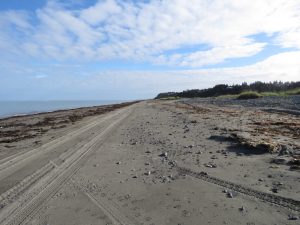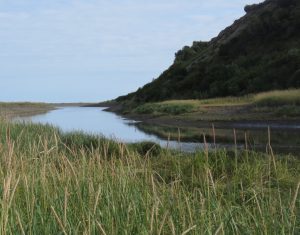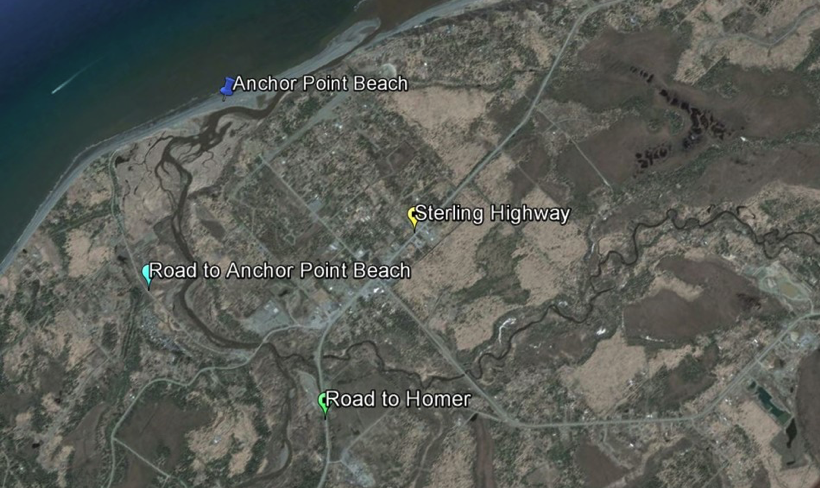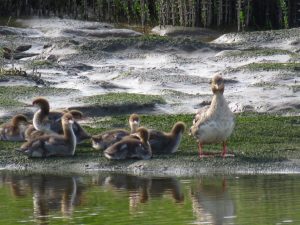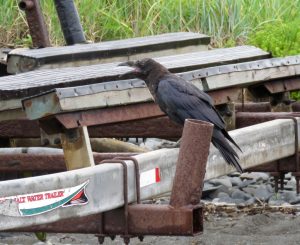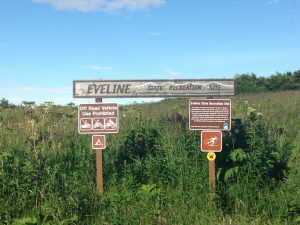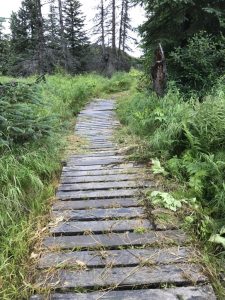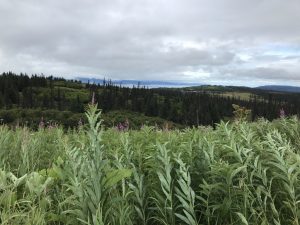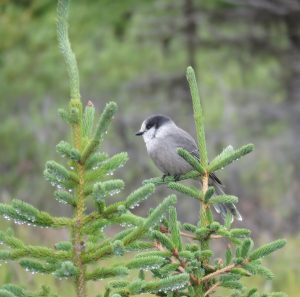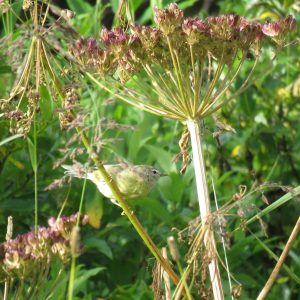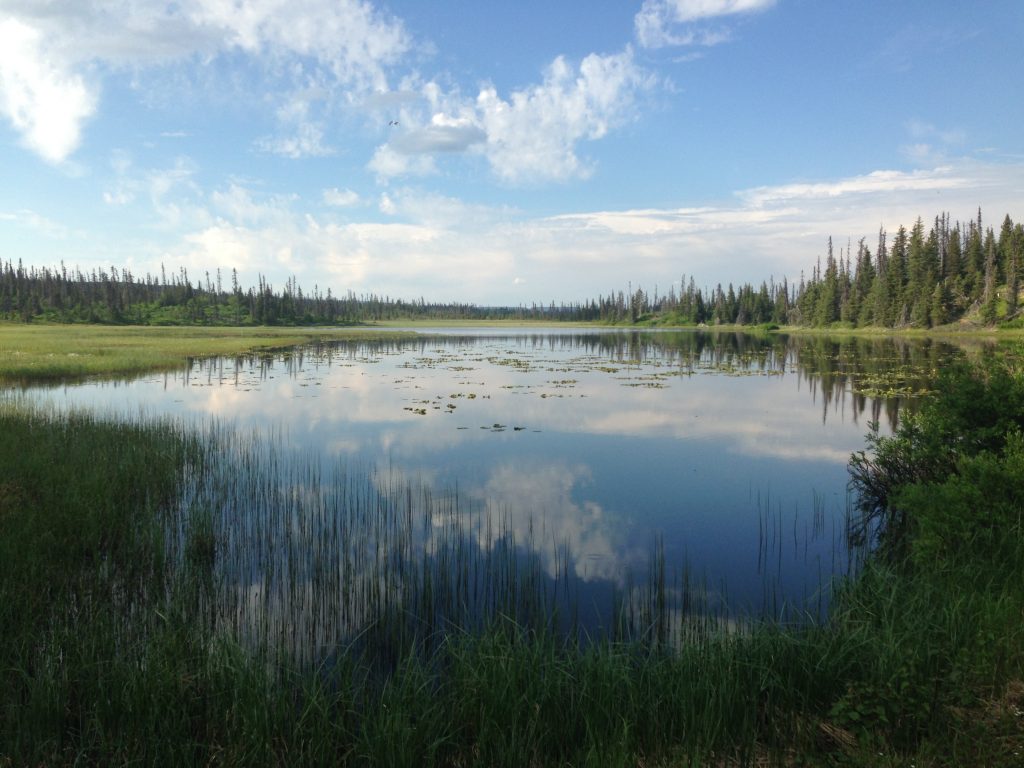
Eagle Lake is great birding for songbirds. Mew Gulls and a Pacific Loon pair nests at the lake. Several shorebird species also nest here: Yellowleg and Wilson’s Snipe. The Jaeger Bog hosts a nesting pair of dark morph Parasitic Jaegers. Both locations are great for songbirds. Merlins and Northern Harrier can occasionally be spotted here.
Directions:
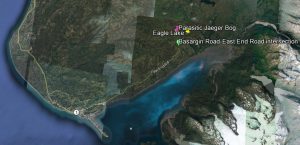
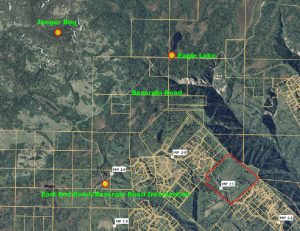
Eagle Lake: Drive approximately 18-19 miles out East End Road. Turn left on Basargin Road (aka Circle Lake Road), drive approximately 2.7 miles to the Y in the road. Go right. Drive another (approximate) 1.1miles. There will be a pull off on the side of the road. Park here. Walk down (northeast) the road about 100 feet or so. There will be a small trail on the left hand side of the road. This trail leads to the lake. The lake is less than ¼ mile off the road. Boots are necessary as this trail as it can be very wet and muddy.
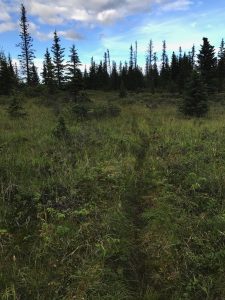
Jaeger Bog: Drive approximately 18-19 miles out East End Road. Turn left on Basargin Road (aka Circle Lake Road), drive approximately 2.7 miles to the Y in the road. Go left. Drive 0.5 miles. There may be a closed gate. If so, park off the road and walk approximately 0.5 miles. There will be a large bog on the left hand side of the road. If the gate is open drive up the hill and down to a small pull-out at the bottom of the hill and on the right hand side of the road. Scope the bog on the left for Dark Morph Parasitic Jaegers that nest here annually. A variety of songbirds can be found here as well.
Be aware. This is bear and moose country.
Bird Species Observed or Heard at Eagle Lake
- Pacific Loon
- Trumpeter Swan
- Common Goldeneye
- Mallard
- Eurasian Widgeon
- Green-winged Teal
- Northern Pintail
- Ring-necked Duck
- Red-necked Grebe
- Spotted Sandpiper
- Solitary Sandpiper
- Least Sandpiper
- Lesser Yellowleg
- Greater Yellowleg
- Wilson’s Snipe
- Red-necked Phalarope
- Mew Gull
- Glaucous-winged Gull
- Herring Gull
- Black-legged Kittiwake
- Bonaparte’s Gull
- Arctic Tern
- Parasitic Jaeger
- Bald Eagle
- Merlin
- Sandhill Crane
- Common Raven
- Black-blled Magpie
- Gray Jay
- Northwestern Crow
- American-three-toed Woodpecker
- Tree Swallow
- Bank Swallow
- Olive-sided Flycatcher
- Hermit’s Thrush
- American Robin
- Swainson’s Thrush
- Varied Thrush
- Gray-checked Thrush
- Black-capped Chickadee
- Boreal Chickadee
- Red-breasted Nuthatch
- Ruby-crowned Kinglet
- Orange-crowned Warbler
- Yellow-rumped Warbler
- Wilson’s Warbler
- Golden-crowned Sparrow
- Song Sparrow
- Lincoln’s Sparrow
- Fox Sparrow
- Rusty Blackbird
- White-winged Crossbill
Bird Species Seen or Heard at Jaeger Bog and surrounding area:
- Parasitic Jaeger
- Arctic Tern
- Mew Gull
- Sandhill Crane
- Willow Ptarmigan
- Northern Harrier
- Bald Eagle
- Wilson’s Snipe
- Greater Yellowleg
- Least Sandpiper
- Hermit Thrush
- Gray-cheeked Thrush
- Common Raven
- Wilson’s Warbler
- Yellow Warbler
- Yellow-rumped Warbler
- Fox Sparrow
- Savannah Sparrow
- Golden-crowned Sparrow
- Common Redpoll
Check out ebird for the latest complete list of birds seen at this location: http://ebird.org/ebird/ak/explore
It’s A Great Day to Bird
